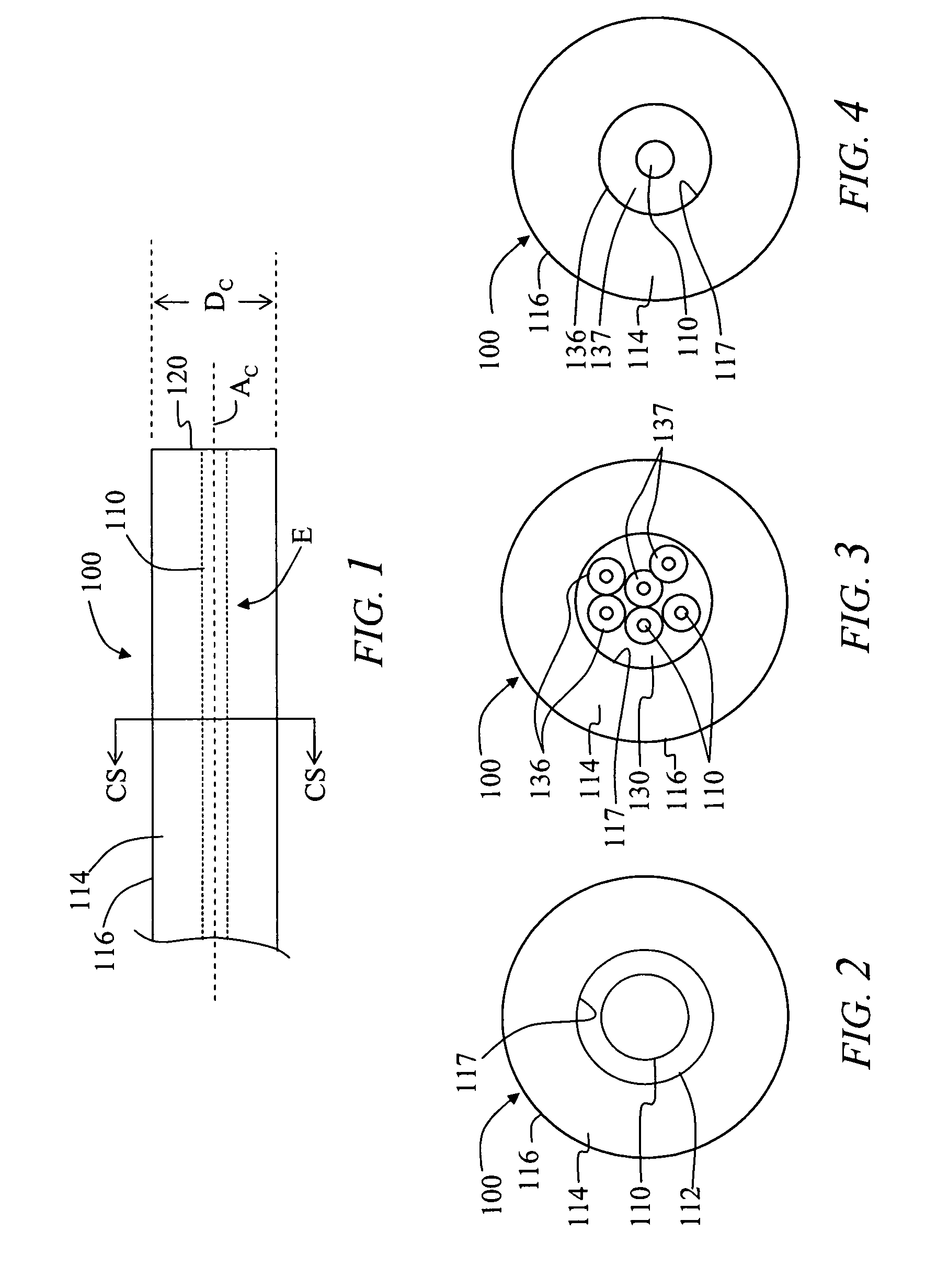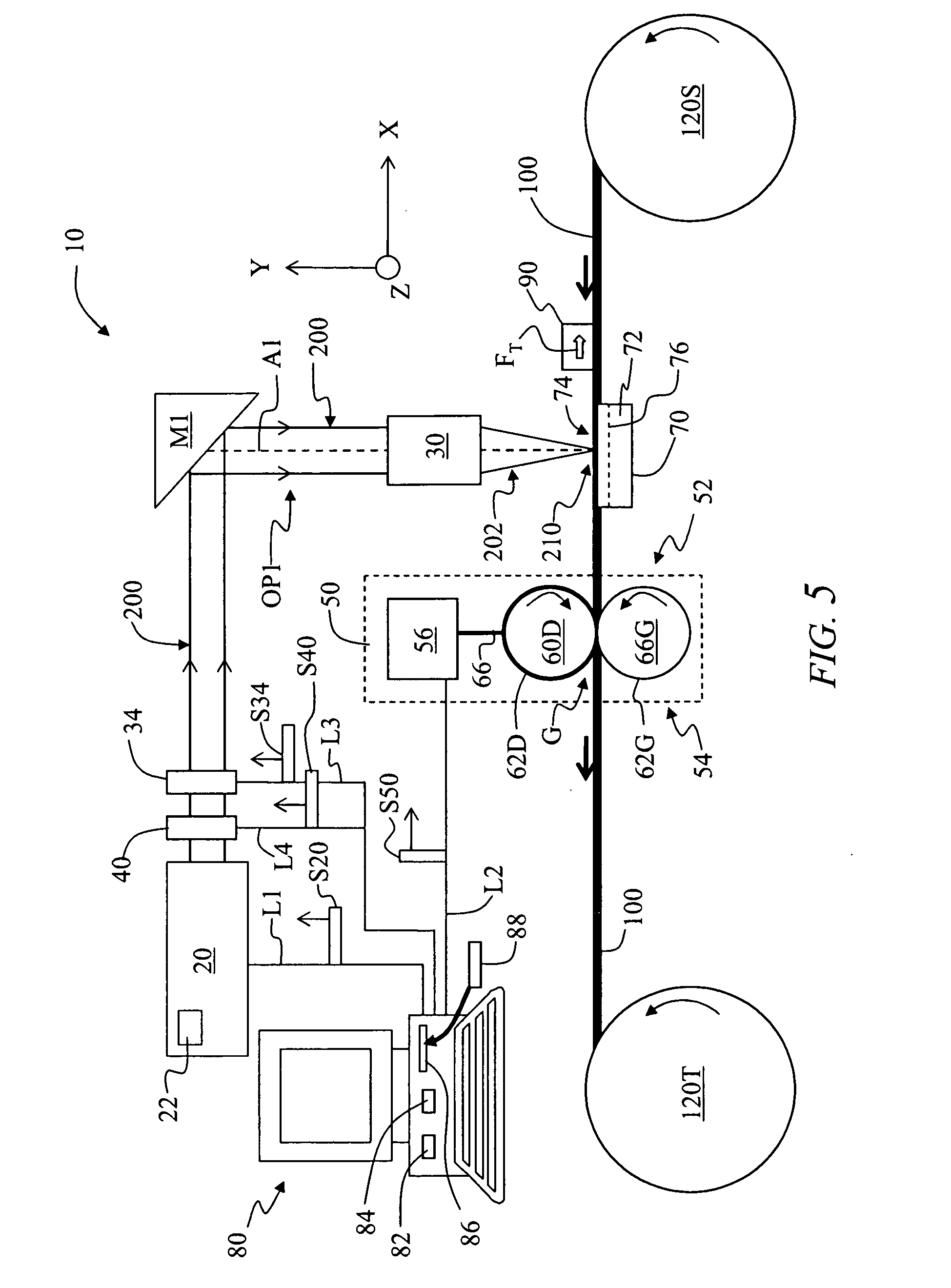Laser-based methods of stripping fiber optic cables
a fiber optic cable and laser stripping technology, applied in the field of laser stripping fiber optic cables, can solve the problems of affecting the performance of the fiber optic cable, the harness not meeting the required tolerances, and having to be scrapped, and the drawbacks of stripping tools
- Summary
- Abstract
- Description
- Claims
- Application Information
AI Technical Summary
Benefits of technology
Problems solved by technology
Method used
Image
Examples
Embodiment Construction
[0025]Reference is now made in detail to example embodiments of the disclosure, examples of which are illustrated in the accompanying drawings. Whenever possible, the same or like reference numbers and symbols are used throughout the drawings to refer to the same or like elements or components.
[0026]One aspect of the disclosure is a method of stripping a fiber optic cable having a protective cover with an outer surface that surrounds at least one optical fiber and that has a cable diameter (DC) and a central axis. The method includes directing at least one focused laser beam onto the protective cover. The method further includes moving the fiber optic cable relative to the at least one focused laser beam in a direction substantially along the central axis to form at least one substantially axially oriented groove in the protective cover, wherein the at least one groove does not reach the at least one optical fiber. The method also includes opening the protective cover at the at leas...
PUM
| Property | Measurement | Unit |
|---|---|---|
| Electrical conductance | aaaaa | aaaaa |
| Thickness | aaaaa | aaaaa |
| Diameter | aaaaa | aaaaa |
Abstract
Description
Claims
Application Information
 Login to View More
Login to View More - R&D
- Intellectual Property
- Life Sciences
- Materials
- Tech Scout
- Unparalleled Data Quality
- Higher Quality Content
- 60% Fewer Hallucinations
Browse by: Latest US Patents, China's latest patents, Technical Efficacy Thesaurus, Application Domain, Technology Topic, Popular Technical Reports.
© 2025 PatSnap. All rights reserved.Legal|Privacy policy|Modern Slavery Act Transparency Statement|Sitemap|About US| Contact US: help@patsnap.com



